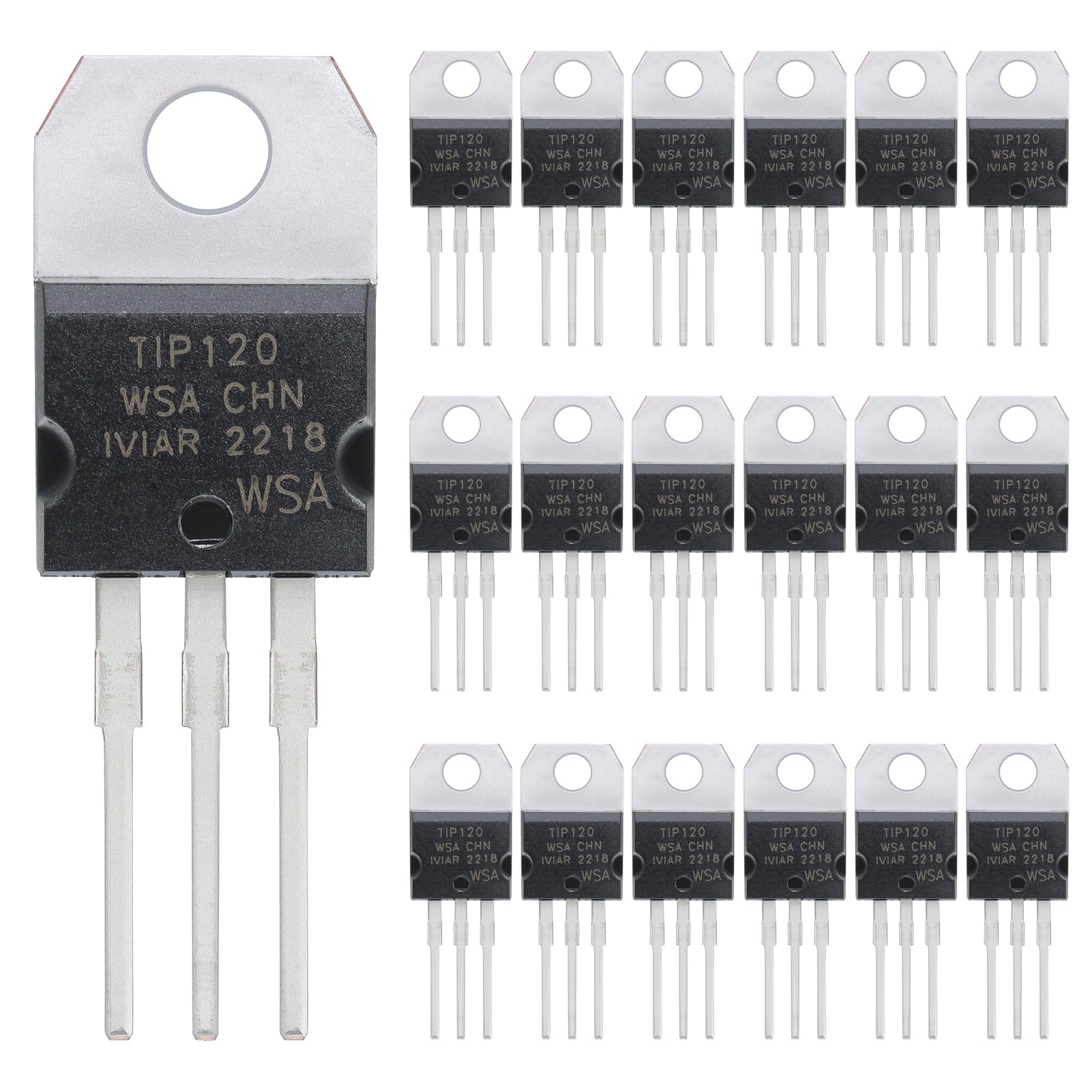






⚙️ Unleash the Power of Innovation!
The ALLECIN TIP120 120 Epitaxial Darlington NPN Transistor is a high-performance electronic component designed for versatility and durability. With a current rating of 5A and a voltage rating of 60V, this pack of 20 transistors is ideal for various applications, ensuring reliability and ease of use with its smart packaging and printed markings.




A**S
The one I tried worked
The one I tried worked. I had to look up the pin-out -- with leads down and the angled sides facing you (the flat side facing away from you), the left is +5VDC, middle is GND and the right is the output. Nominal output is 2.5VDC with no magnetic field. The direction of the output changed when the magnet was reversed. With just one 1/4" diameter disk magnet, the voltage range was 4.24V and the low was 0.80V with the magnet at the sensor; with two magnets the low went to 0.75V, the high was the same.With the two magnets, the output changed by 0.001V about 6 inches but remained that way until about 1/2 inch where the voltage was about 2.63 volts -- 0.13V change. A 3-inch stack of magnets was 2.68V. A 1 inch disk magnet gave 3.25V at 1/2 inch and 2.75V at 1 inch distance. At 2 inches the 1-inch magnet gave a change of 0.04V from the 2.5V nominal.
I**Y
Because Sometimes You Just Need a Workhorse
Let’s be real—there are sleeker, more efficient transistors out there… but the TIP31C? It’s the Chevy 350 small-block of general-purpose BJTs. It’s rugged, it’s simple, and it’ll push through heat, current, and amateur mistakes like a champ.I grabbed a pack of these to throw into:A DIY audio amplifier project (classic transistor push-pull),A linear power supply I was repairing,And even a high-power LED dimmer test circuit—and yep, it handled it all just fine.The C variant means it’s the high-voltage version of the TIP31 line—can handle up to 100V and 3A if you’ve got a decent heat sink strapped on. Great for switching, signal amplification, and good ol' analog control circuits. If you’re into learning by building, this one’s your friend.Why It Slaps:TO-220 package = easy to mount, easy to cool, breadboard-friendly (with a breakout)Handles high voltage & current loads without blinking (with proper thermal planning)Works great for PWM, amplifiers, relays, motors, and LED banksCheap and available—perfect for experimenting and prototypingWhat Could Be Better:Needs a good heat sink at anything over 1A—this thing will get toastyBJT means base current draw—if you're coming from MOSFETs, plan your resistorsNo extras in the packaging—no mounting hardware, no datasheet (but hey, it’s online)TL;DR:The ALLECIN TIP31C is a tough, no-frills NPN silicon power transistor for your mid-to-high power needs. It’s not fancy. It’s not surface mount. But it’s reliable, affordable, and ready for abuse—which makes it a perfect staple for DIY electronics and educational builds.It’s the kind of transistor that forgives your mistakes and teaches you something.
P**B
Installed in a ham transceiver, and it works well.
I acquired a non-working transceiver that had some "substitutions" installed for the pair of RF final output FETs by a previous "tech". Although the "touted-as-heavier-duty" output FETs WERE rated slightly more "power", they were rated for 55V instead of the 100V rating of the IRF-520s. Too much RF voltage peaks are likely what killed the "substitutions". In many cases it is best to trust the design engineers, and stick with the OEM part number that the service manual calls for. Just my opinion, of course. These worked well for me (careful bias adjustments were also done to ensure long-term reliability)
T**N
They work for my needs
I'm uncertain if these are genuinely 2N5457 transistors, but they work for what I need.
H**N
Works as expected
No issues yet
D**F
Works for driving high
I started by using them as a pull-down with a resistor pull-up to Vcc. Doing it that way made me have another stage of inverter before driving a MOSFET gate to get the logic sense correct. I Found I could instead tie the collector to Vcc and use a 1k resistor pull-down on the emitter and still get a good high out. That way I didn't need the additional level of inversion.
S**.
Good substitution
It arrived quickly and the logic level MOS FET worked well with the Raspberry Pico. I used 100 ohm resistor in series with the GPIO Pin to gate and a 10 K ohm from gate to ground to help with noise.
A**Z
Works Great!.
Excellent seller, quick shipping, as described, great deal, I recommend!. Thank you!.
Trustpilot
1 month ago
5 days ago